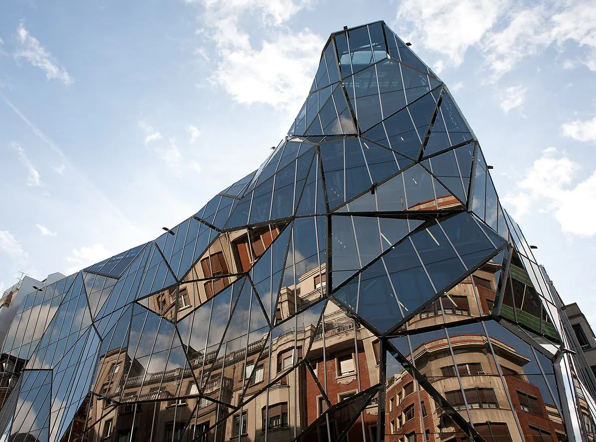
It is this very spirit of exploration and innovation that is fostered at institutions like the DC School of Architecture and Design, one of the best architecture college in Kerala. Here, students in their basic design and architectural design subjects actively engage with origami and kirigami methods, allowing them to explore a vast array of possibilities for devising unique and diverse architectural forms and pushing the boundaries of their design education.
Architecture has always found muses in art, nature, and technology, and recently, the ancient Japanese arts of origami, the meticulous folding of paper, and kirigami, which adds the dimension of cutting to folding, have moved beyond their cultural origins to greatly influence the built environment. These practices, once confined to delicate paper creations, are now shaping architectural designs that prioritize flexibility, adaptability, and efficiency, seamlessly blending timeless aesthetics with cutting-edge functionality. At their core, both origami and kirigami transform flat surfaces into three-dimensional forms—a principle with a number of applications for modern building.
As urban landscapes become denser and the necessity for sustainability grows stronger, architects are seeking innovative ways to create smarter, more efficient, and environmentally responsive buildings, and folding techniques offer compelling solutions. For instance, space optimization becomes a reality through collapsible and expandable structures, leading to remarkable innovations like foldable emergency shelters for disaster zones, modular housing units that adjust to evolving spatial requirements, and dynamic furniture and interiors that maximize space in compact urban settings. Beyond mere spatial benefits, origami-based designs revolutionize structural efficiency by distributing stress and loads in unique ways, resulting in constructions that are both stronger and lighter—consider the application in retractable stadium roofs, deployable bridges, and even solar panels and shading devices that intelligently track the sun’s path.

Furthermore, kirigami patterns are being employed to create dynamic building skins and facades that can open and close for optimal ventilation, serve as responsive shading elements, and introduce captivating aesthetic textures that are as functional as they are beautiful. These ancient arts are also driving material innovation, demonstrating how rigid materials like metal or concrete can be manipulated through folding and cutting to become flexible and responsive, fostering the development of smart materials that morph in response to temperature or light, architectural membranes with variable permeability, and interactive installations for exhibitions, architects can now translate intricate origami and kirigami designs into tangible structures with unprecedented precision and scalability.
Real-world examples include the Miura Fold, initially conceived for space-saving satellite solar panels, now gracing architectural canopies and emergency shelters, and the Allianz Arena’s facade in Munich, which, while not literal origami, embodies its modular, repetitive folding principles with air-inflated ETFE panels. Groundbreaking research at institutions like Harvard and MIT is also exploring how kirigami cuts can create automatically adapting solar shading systems. As advanced fabrication technologies such as 3D printing, CNC cutting, and laser etching continue to evolve,
The future of architecture suggests a departure from static buildings; instead, they will move, breathe, and adapt, much like living organisms, thanks in large part to the transformative principles of folding. Ultimately, the integration of origami and kirigami into architecture is far more than an aesthetic trend; it signifies a fundamental shift in our perception of space, structure, and materiality, enabling architects to craft a new era of dynamic, responsive, and sustainable design that folds seamlessly into the future.
Learn it from one of the top architecture college in kerala, DC School of architecture and design Vagamon and DC School of architecture and design Trivandrum.